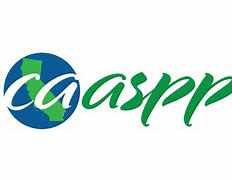Juniors, it is time to prepare for CAASPP. But what is CAASPP?
CAASPP stands for the California Assessment of Student Performance and Progress. It is a system of assessments designed to measure student achievement in California in key subjects like English language arts/literacy and mathematics.
The CAASPP includes different types of assessments, such as the Smarter Balanced assessments for grades 3-8 and 11, the California Alternate Assessment (CAA) for students with significant disabilities, and the California Science Test (CAST) for grades 5, 8, and high school. The results help educators understand students’ academic progress and inform instruction.
The CAASPP system is designed to provide a comprehensive view of student learning and performance across California schools. Here are some key aspects:
Assessment Types:
- Smarter Balanced Assessments**: These are adaptive English language arts and mathematics tests for students in grades 3-8 and 11. They measure depth of knowledge and range of skills.
- California Alternate Assessment (CAA)**: This assessment is catered to students with significant disabilities who cannot participate in the Smarter Balanced assessments. It ensures that these students can demonstrate their knowledge and skills in a way that is appropriate for their learning needs.
- California Science Test (CAST)**: This assessment evaluates student learning in science in grades 5, 8, and high school and aligns with California’s Next Generation Science Standards (NGSS).
Purpose and Goals:
- The primary purpose of CAASPP is to provide information about student progress toward achieving California’s academic content standards. The tests aim to help teachers, schools, and districts identify areas where students excel or may need additional support.
- The results also contribute to accountability measures for schools and districts and help inform educational policy decisions.
Performance Levels:
- The CAASPP provides performance levels that categorize students as “standard exceeded,” “standard met,” “standard nearly met,” or “standard not met.” These categories help educators and parents understand how well students perform compared to grade-level expectations.
Reporting:
- Results are reported to students, parents, and schools and can be used to guide instructional improvements. Reports often include individual student scores, overall school performance, and comparisons to state averages.
Participation:
- All public school students in the specified grades are expected to participate in the CAASPP assessments, although accommodations are available for students with disabilities.
Preparation:
- Resources, including practice tests and sample items that reflect the questions and tasks students encounter, are available to help them prepare for these assessments.
Overall, CAASPP plays a crucial role in California’s educational landscape, helping to ensure that all students have the opportunity to succeed academically. It is essential to try your best and work hard on the test.







